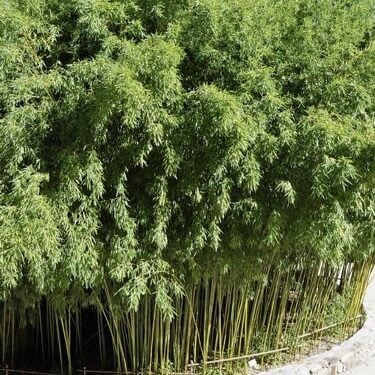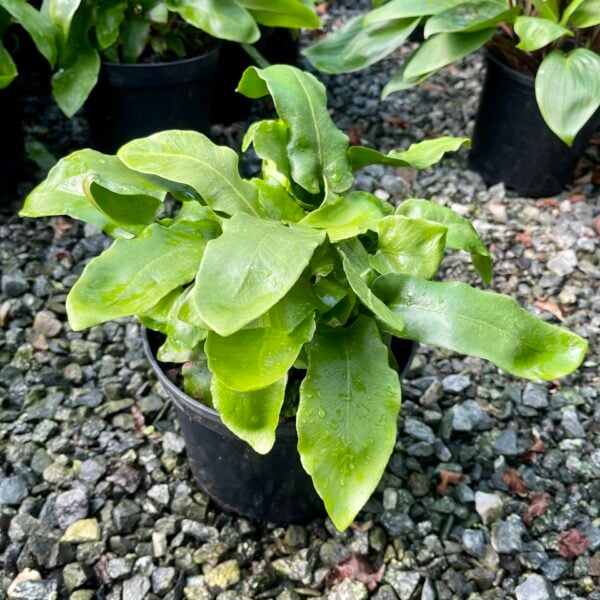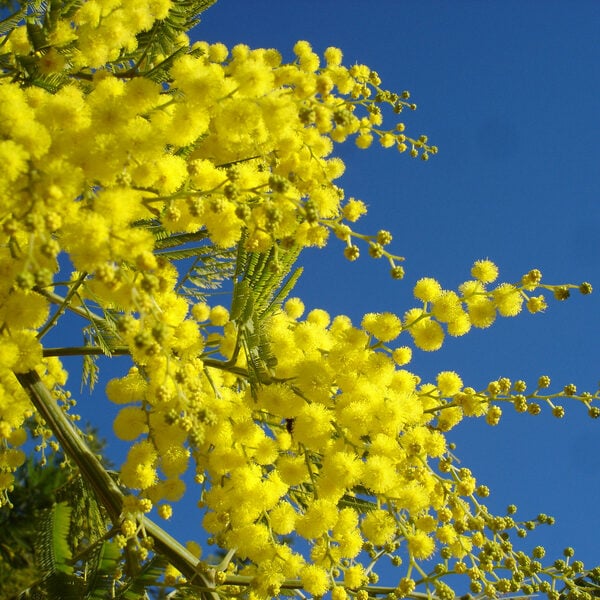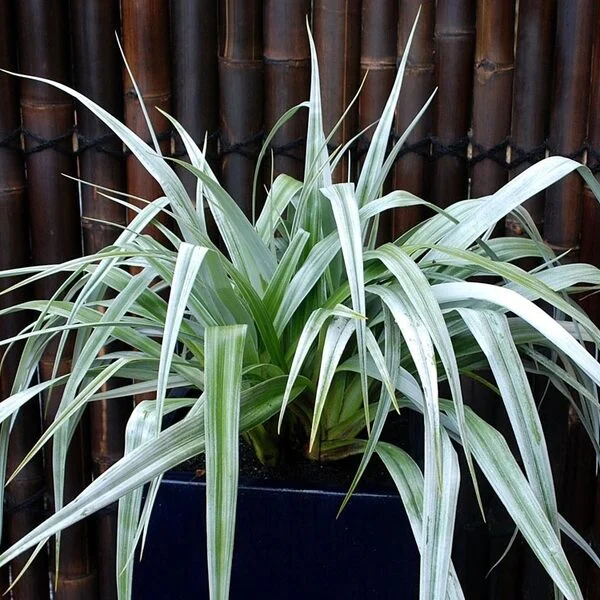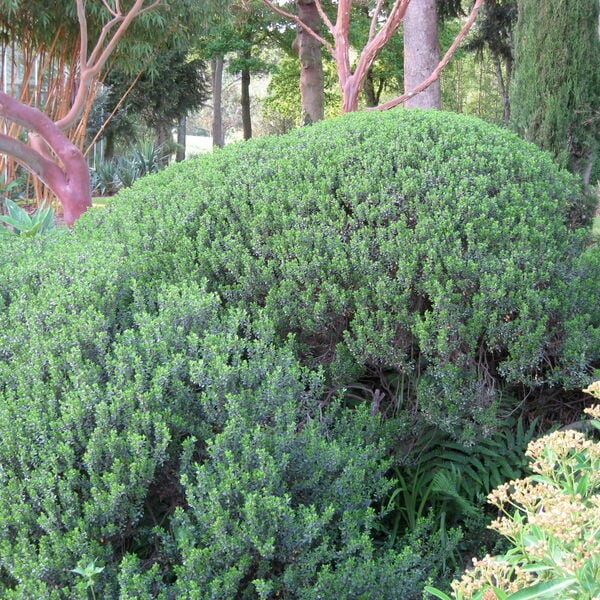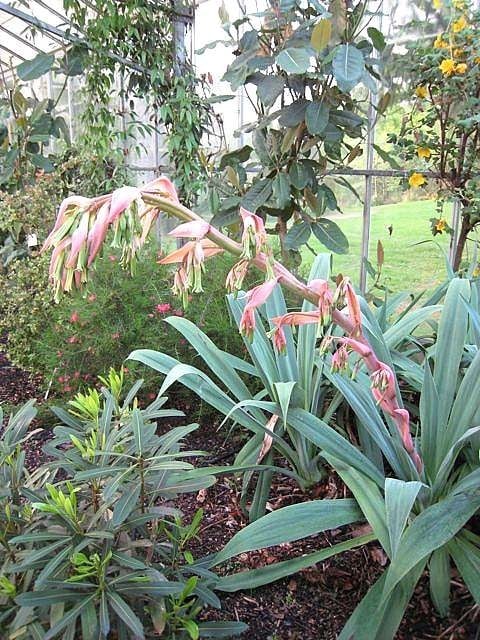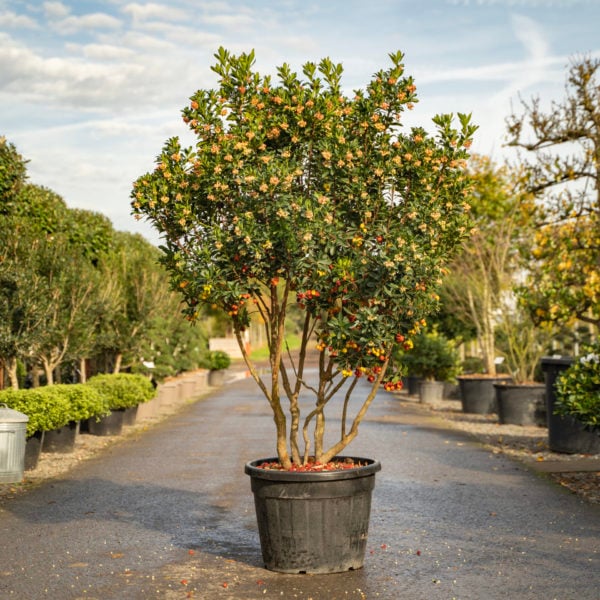Phyllostachys bissetii
The tallest bamboo we have with green canes. Can grow to 20ft or more in ideal conditions (plenty of water). More vigorous than Phyllostachys aurea (the other green one). Please contact us for stock availability and sizes.

Hardiness level Green
Below are many useful suggestions about what you can do with bamboo. however - if you're concerned about it spreading - don't buy it.
Phyllostachys bissetii stands out from the crowd because it excels at what it does - it is extremely hardy and tolerant. It is one of the freshest looking bamboos at winter's end - its thickly growing foliage and densely clustered canes are almost completely windproof, thereby making a perfect screening or hedging plant.
Requirements of all bamboos: Like all grasses, Bamboos need a reasonable amount of light, plenty of water, plenty of nitrogen (we use 'Blood, Fish and Bone' fertilizer) and will always do best when they have little to compete with - particularly grass. Best way to deal with that is dig a clearly defined bed around the plant, mulch it and keep it well weeded. An abundant water supply is the most important of these requirements and we usually advise customers to install an irrigation system if they're planting large quantities - especially if they're on very well drained soil (chalk or sand for example). Ask us for details about irrigation.
Creative Maintenance and Controlling the spread of Bamboos: The following applies mostly to the Phyllostachys bamboos. The Fargesia bamboo hardly spreads at all and only requires occasional removal of dead canes. Pseudosasa and Sasa bamboos require little Creative Maintenance - they do well if left alone with the occasional removal of dead canes. Not without reason, people worry about bamboos eating their garden. We think there's a relatively easy system for growing bamboos that's both practical and cosmetic.
- Creative maintenance. Cut out the dead canes and the runty little thin ones that are never going to come to anything. You're now left with only stout young and healthy canes. For them to look at their best, remove all the branches below an arbitrary line - maybe about 3ft or 1 metre above the ground. Experiment and see what you think. It's very easy and can make an enormous difference to the way the whole plant looks.
- Control. If you don't want it to spread (and most will, if allowed to), clearly define the area you want the bamboo to grow within. Every time it sends any shoots out beyond its designated area, chop off the runner as close to the main plant as possible. Nothing like using a spade with a nice sharp edge that you've just created on an electric grind stone. This way you'll keep the plant under control and it will never have a chance to develop enormous root systems that can render bamboo extremely difficult to control. This does mean that the canes on your plant will never get as big as if it was out of control but if you have a small garden, this seems a small price to pay. We sell bamboo barrier which you could also use if you're worried about it getting carried away.
We see the whole process as a kind of self fulfilling prophecy - keep it under control and it will be easy to control. Let it get out of control and it will be extremely difficult to control.
Additional Information |
|
|---|---|
| Soil Type | Clay, Dry / Well Drained, Sandy, Soggy /Damp (Plant high and you can get away with murder) |
| Light | |
| Plant Type | Bamboos (All evergreen), Evergreen, Hedges, Screening Plants |
| Continent of Origin | |
| Specialist Plants | |
| Features | |
| Situation | Coastal, Mild City Gardens, Plants for Pots, Sheltered Garden |
| Hardiness | |





